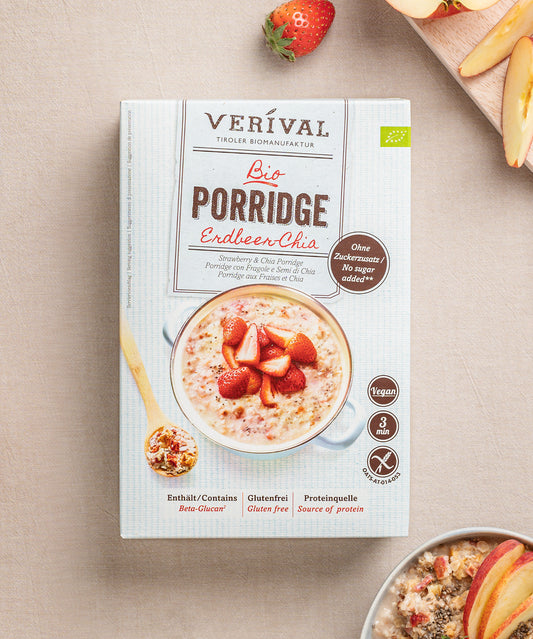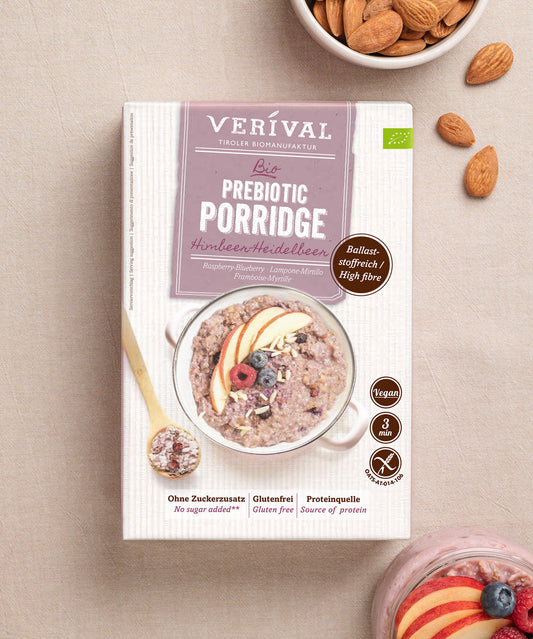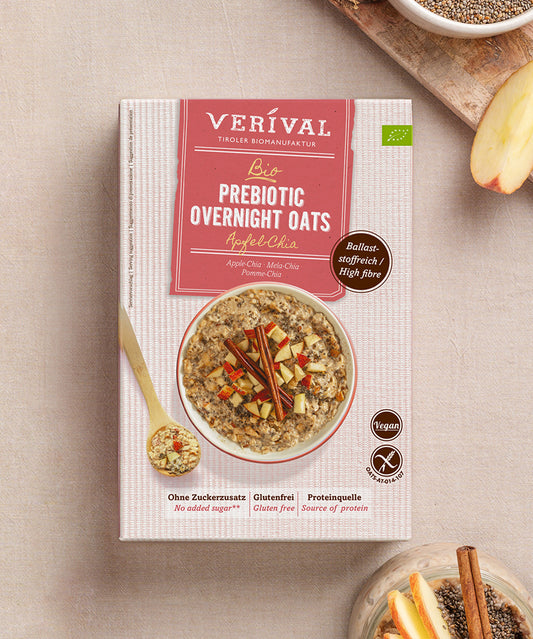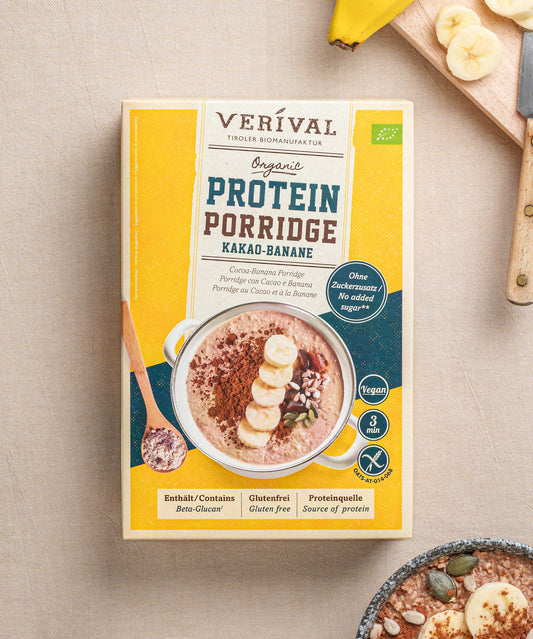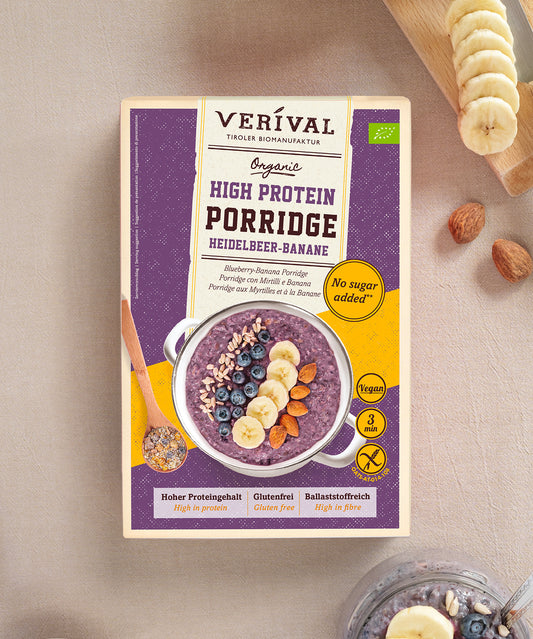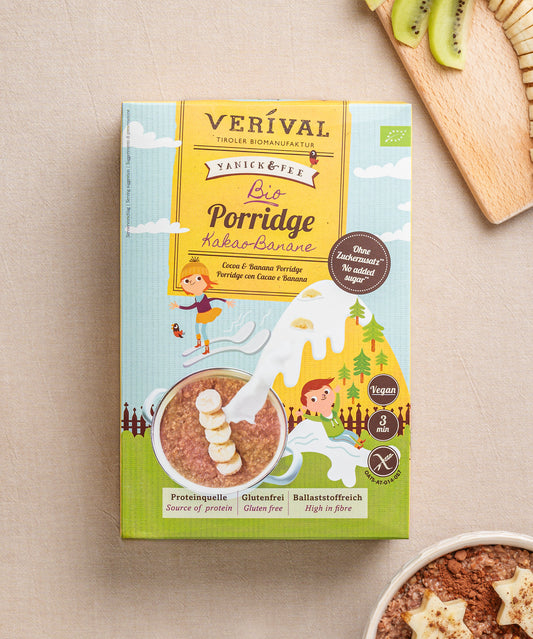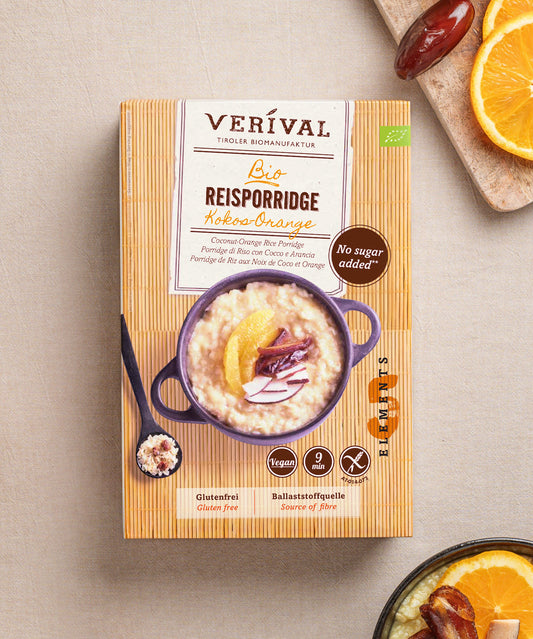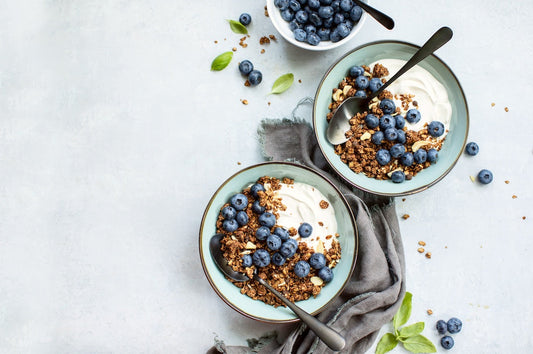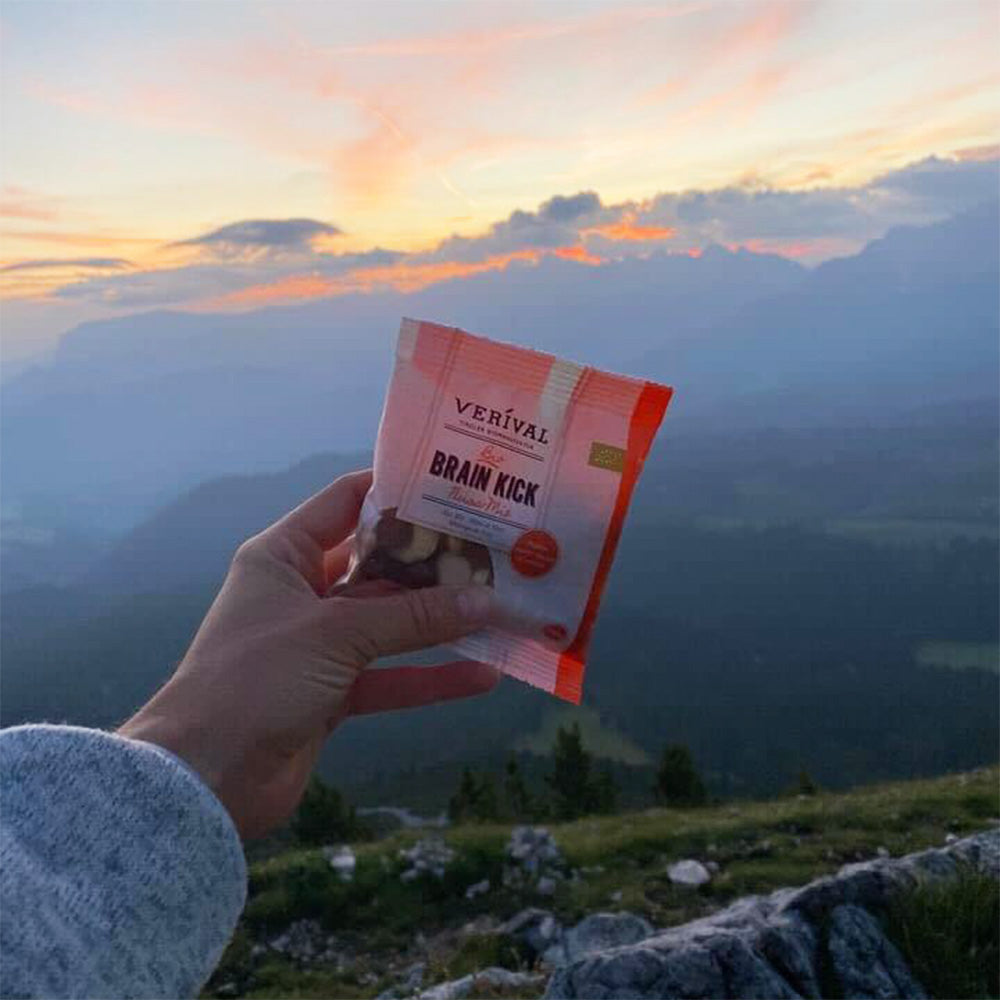Dried or freeze-dried fruit is often found in products such as porridge, muesli and mixes for sweet bowls. But what do these terms actually mean? What is the difference between dried and freeze-dried fruit? In this article, we will take a look at these terms and the health aspects.
What are freeze-dried fruits?
Fresh, untreated fruits are rarely used in breakfast products. These would quickly spoil and make the product inedible. Therefore, many food manufacturers use preservation methods. These are intended to make the fruits contained in the product longer edible and durable.
One popular method is drying. The selected fruits are first cored and then dried at a low heat in the oven or in special dehydrating devices. This is how grapes become raisins or sultanas, and plums become dried plums. However, opinions are divided on so-called dehydrated fruits – some love them, others can't stand them.
How to make a healthy breakfast – find out more
Fortunately, there is another process that allows fruit to retain most of its original flavor and structure. This is called freeze-drying. Let's take a look at what makes this preservation process different and how it works.
How are freeze-dried fruits made?
The production of freeze-dried fruits is quite complicated and elaborate in detail – however, we will go through it in a simplified version so that it is easy to understand.
Why berries are so healthy – find out more
Freeze-drying fruit is a gentle preservation method. This means that the original structure and nutrients are retained, yet the fruit is preserved.
1. To start with, the ripe fruit is harvested. The fresh fruit is now still in its normal state and contains a lot of water. Strawberries, for example, are 90% water. Now the fresh fruit has to be quickly frozen to preserve the valuable nutrients.
2. In the next step, the harvested fruit is placed in a special container. This is then closed and a vacuum is created inside. This is done by extracting air from the closed container, thus creating a partial vacuum.
3. Step by step, the resulting pressure causes water to escape from the fruit. In technical jargon, this process is called sublimation.
Sublimation: sublimation describes the process by which something changes from a solid to a gaseous state – in this case, water. In short, the water contained in the fruit is first frozen and thus becomes solid. It is then gradually converted by the pressure step by step into water vapor – and thus into a gas.
The end products of the manufacturing process
What remains after freeze-drying are small versions of the original fruits. Due to the dehydration, the fruits retain their basic structure and appearance, but in a smaller form.
What remains, however, are the nutrients. So don't be deceived if, for example, a package contains “only” three to six grams of freeze-dried strawberries. This amount corresponds to the nutritional value of around 30 to 60 grams of fresh strawberries. The difference is mainly due to the loss of water; the nutrients and flavorings contained in the fruit are retained.
Freeze-dried fruit is that healthy
The big advantage of freeze-drying, in addition to preservation, is not necessarily that the structure is retained. This may be important for freeze-dried flowers, but for food processing it is of secondary importance. Often, the freeze-dried fruit is still ground into a powder in order to be able to better integrate it into the product.
Organic porridge with freeze-dried fruit – try it now
The real advantage of the preservation process lies just below the surface (literally). For example, the flavorings that are so important for the taste are retained. The dehydration even concentrates the flavor of the fruit – making the flavor even fruitier and more intense.
In addition, the color remains stable, giving the breakfast product a fruity appearance. Furthermore, important phytochemicals and other micronutrients are also retained. Freeze-dried fruits are true vitamin and mineral bombs and thus have a positive effect on health.
Vitamin C and selenium, for example, ensure a well-functioning immune system, while the vitamins of the B complex (including B1, B6, B12) support the energy metabolism and reduce fatigue. Vitamin E and copper, in turn, protect against oxidative stress. Iron, zinc and iodine promote concentration. Thus, micronutrients are extremely important in a healthy diet.
How can you recognize products containing freeze-dried fruits?
To sum up, it can be said that freeze-dried fruits are very healthy. But how can you recognize where and in what quantities they are contained?
If it is not immediately apparent on the packaging, a look at the list of ingredients often helps. Let's take the Verival Strawberry-Raspberry Porridge Smoothie Bowl as an illustrative example.
If you look at the list of ingredients, you will find the word “strawberry powder” in third place. In this case, the strawberry powder is nothing more than freeze-dried strawberries, which are then ground.
The proportion of strawberries in the bowl is 6% – this can also be found in the list of ingredients. This means that 100 grams of the bowl contains 6 grams of freeze-dried strawberries.
That may not sound like a lot at first, but appearances are deceptive. The fact is that the nutrient content of six grams of freeze-dried strawberries is the same as that of a full 60 grams of fresh strawberries. As a reminder, water is removed during the freeze-drying process. This reduces the total weight, but the nutrients remain.
Thus, with six grams of freeze-dried strawberries, the body actually gets the same amount of micronutrients as in 60 grams of fresh strawberries.
Breakfast with freeze-dried fruits
In our Verival breakfast products, we mainly use freeze-dried fruits. This makes the strawberry-raspberry porridge smoothie bowl the rule rather than the exception. There are many reasons for this, which we will now briefly summarize.
For one thing, freeze-dried fruits are considered healthy. They contain plenty of healthy micronutrients in concentrated form, making them a perfect companion for a healthy breakfast.
In addition, it is well known that you eat with your eyes first. Another advantage of the gentle freeze-drying process is that both the taste and color are preserved or even intensified.
All in all, freeze-dried fruits are an excellent option for enhancing the flavor and health benefits of breakfast products such as porridges, mueslis and crunchies. It's a win-win situation for the taste buds and the immune system!


